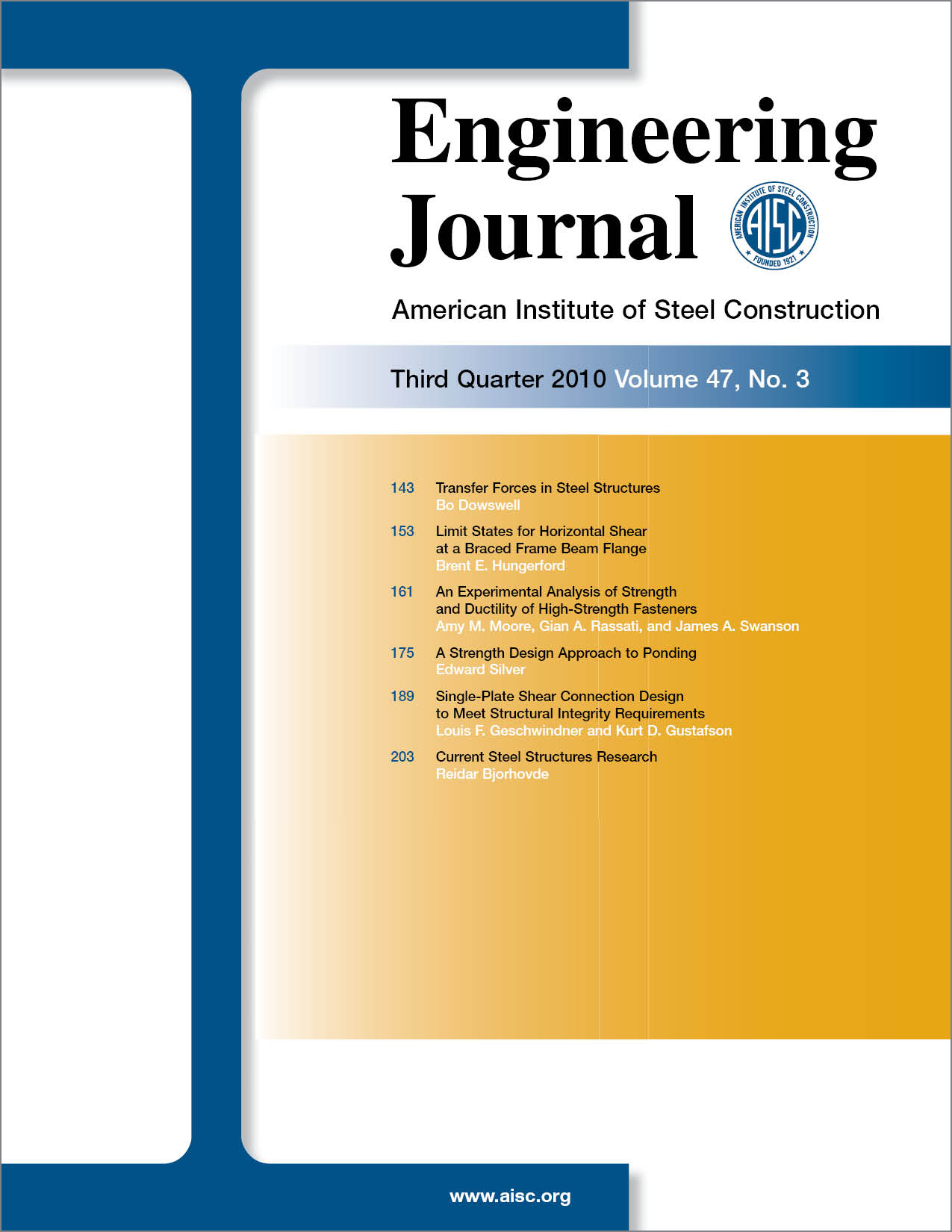An Experimental Analysis of Strength and Ductility of High-Strength Fasteners
DOI:
https://doi.org/10.62913/engj.v47i3.985Keywords:
structural bolts, threads excluded, threads included, shear strength, fastener ductilityAbstract
A total of 1,533 structural bolts, consisting of four different bolt grades and six different diameters, up to 5 in. in length, were tested in direct tension and shear with the threads excluded and not excluded from the shear plane. Thread lengths, tensile and shear strength, and elongation at failure were measured. The experimental values were then compared to the requirements of the current AISC, RCSC, and ASTM specifications. This paper presents and discusses the results of the experimental tests and of the subsequent comparisons. It is concluded that all fasteners tested meet the minimum strength required by ASTM and RCSC. Furthermore, it is noted that while the strength in tension and in shear with the threads excluded from the shear plane are conservatively assessed by AISC specifications, the strength with the threads not excluded from the shear plane is often not conservatively predicted. As a consequence, an alternative expression for the shear strength with the threads not excluded from the shear plane is proposed. It is also concluded that the actual thread length can be different than the nominal values, potentially affecting the available cross section in shear. Finally, the measurement of the elongation at failure shows that all grades of fastener tested have a satisfactorily ductile behavior.

